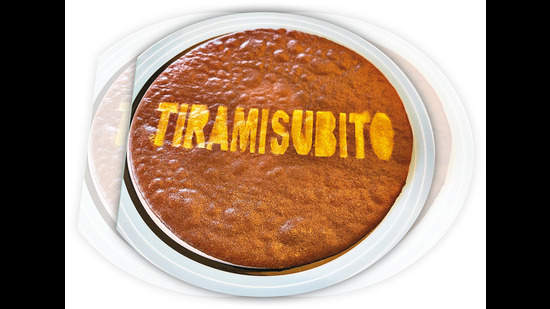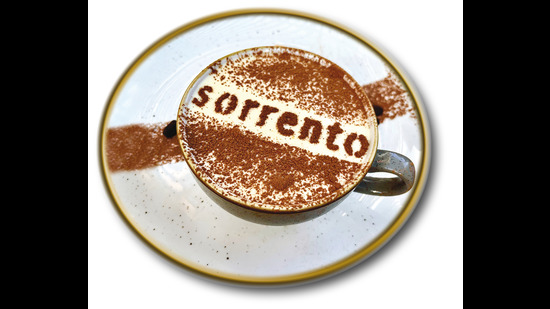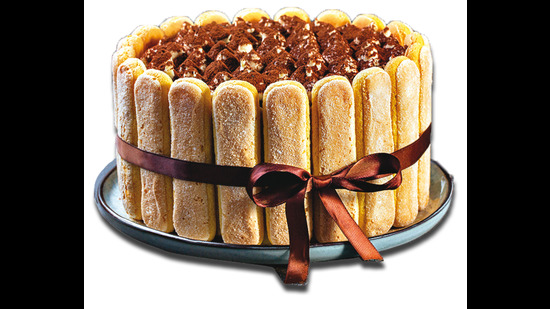I am pretty sure that hardly anyone in India’s food community noticed that Ado Campeol died at the end of last month. But maybe we should have.
Campeol was called the father of the Tiramisu, the one Italian dessert that all Indians love. In fact, Tiramisu is now so popular in India that it turns up on all kinds of menus—not just at Italian restaurants. Indian pastry chefs regard it as a mark of skill to make Tiramisu and serve it with special pride.
Most of us—including the chefs who make it—regard Tiramisu as a traditional Italian dessert. It is nothing of the sort. You hardly ever found it on a menu in Italy till the 1990s when it suddenly started turning up everywhere. And according to the Campeol legend, he did not invent it till 1969 (or the early 1970s according to some versions) and it remained a local dish, restricted to Treviso, where his restaurant was, till the late 1970s.

Now, Tiramisu is big business in Italy. There is an Accademia dei Tiramisu, an organisation devoted to ‘transmitting the culture of Tiramisu’. There is an annual Tiramisu World Cup for amateur chefs. There is also a brotherhood of Tiramisu (Confraternita del Tiramisu) which is dedicated to protecting the traditional Tiramisu. And there is the official Italian government recognition as a Prodotto Agroalimentare Tradizionale (officially approved regional specialty) certification to Friuli which claims that the dessert was invented within its borders.
The certification has led to a huge row. Those who believe that Campeol invented the Tiramisu say that he invented it at his restaurant in Treviso in the Veneto region. But in Friuli, they have always disputed this claim, saying that a lady called Norma Pielli created the dish a decade before. They claim to have Norma’s handwritten recipe for the dish which, they say, was written in 1959.
In Veneto, they regard this as a swindle and have fought to have Campeol recognised as the true inventor. They may have had their way. When Campeol died on 30 October, this year, he was called the Father of Tiramisu all over the world and Friuli did not rate more than a passing mention (if that).

How did Tiramisu become a global craze? The answer seems to be that like Fettuccine Alfredo, a dish invented in Rome but popularised in America, the Tiramisu craze owes much to the United States.
In his influential book How Italian Food Conquered The World, the food writer, John Mariani, describes Tiramisu as ‘a rich, achingly sweet confection of sponge cake, chocolate, espresso and cream cheese’. He adds: “for some reason this dessert became a phenomenon to be found on every upscale Italian menu in the US by the 1980s, while in Italy it was almost unknown. Later, the Tiramisu craze caught on even in Italy where, by the 1990s, it had become a staple on the menu.”
It is a measure of how relatively recent the popularity of Tiramisu is that few Italian cookbooks from before the 1990s contain recipes for it. And when it featured in the New York Times in 1985, it was as a ‘new dessert’. That’s why most chefs don’t bother too much with the purists who say that a Tiramisu must be made to a traditional recipe. The original recipes (both the Veneto and Friuli versions) do not contain any alcohol and yet, most Italian chefs will tell you that Marsala or some other kind of booze is integral to the dish.

Worse still, because it is a dish that is evolving, many people are rigid in their attitudes and argue that one version (probably the first one they tasted) is the real thing and that all others are wrong. At Massimo Bottura’s Dubai restaurant Torno Subito, for instance, the Chef Bernardo Palladini tried deconstructing his Tiramisu only to be told by guests that they had tried the real thing and this was not it.
Massimo does not have this problem at the three star Osteria Francescana where he has made pumpkin Tiramisu (“I don’t like very sweet desserts,’ he says). But in Dubai, Bernardo had to heed local sentiment so he took the ingenious step of making a large Tiramisu that comprised his original deconstructed Tiramisu covered by a traditional Tiramisu, so guests got two desserts in one.

Why do Indians love Tiramisu so much? One obvious reason is that Indian chefs make their Tiramisu very sweet. Pastry maestro Sahil Mehta’s operation is called Paris My Love, but he makes an exception for the very un-French Tiramisu because of its popularity. But he refuses to make it too sweet and gives it a strong coffee bump.
Pastry guru Vinesh Johny prefers to move away from the very sweet version and to play around with the principle of the Tiramisu. For instance, he makes a kala jamun with a Tiramisu-inspired topping. He is upfront about his favourite Tiramisu. “I wish I had a story to say that the best one was in a little café in Venice. But I made it, baking at home, during the lockdown,” he laughs. Vinesh’s recipe is on his Instagram and it is very detailed.
I am not convinced that all chefs even like Tiramisu. They make it as a response to public demand. Ritu Dalmia dismisses it as an Italian trifle and frankly, I agree with her. It’s not a dessert I rate very highly.

Rohit Sangwan of the Taj Land’s End, one of the most knowledgeable Indian chefs I know, has the best explanation for the Tiramisu’s popularity in our country. “Basically, Indians love mascarpone,” he says. “It is sweet and creamy without any of the sourness of cream. Put mascarpone on anything and it will sell.”
Rohit, who I have long called The Milkman’s Friend, because of his love of dairy products, says that he even puts mascarpone on toast and sprinkles a little sugar on it to make his own version of Chini Malai Toast.
“That’s all there is to it.” he says, in his no-nonsense way. “Put sweet mascarpone on anything and people will love it. It’s got nothing to do with the history and heritage of Tiramisu.”

Is that true? I asked Sahil Mehta who said that the key to his Tiramisu is the quantity and quality of the mascarpone he uses. So, maybe Rohit is right.
The great chefs can do their fancy variations on the Tiramisu and the Italians can fight over its invention. But give Indians mascarpone and sugar and we will always love it.
Maybe we treat Tiramisu as “Italian logon ka cheeni-Malai cake.”
The views expressed by the columnist are personal
From HT Brunch, November 14, 2021


